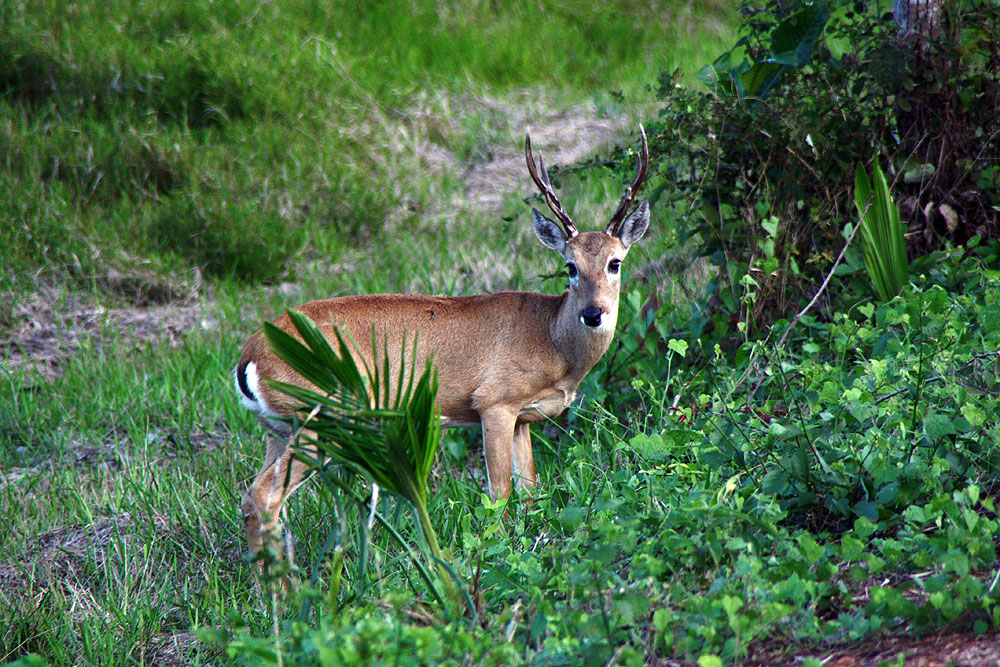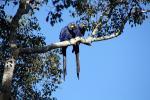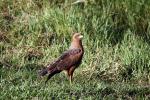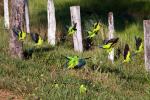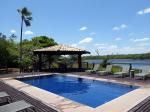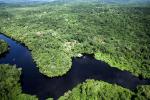Brazil is considered by some to have the greatest biodiversity of any country in the world. It is home to jaguars, pumas, capybaras, sloths, tapirs, monkeys, anteaters, armadillos, otters and dolphins; hummingbirds, toucans, parrots, macaws and birds of prey; caimans, turtles and anacondas. But where should you go to see this abundance of wildlife? Most people would immediately think of the Amazon, but what about the Pantanal?
On my recent trip to Brazil, I was lucky enough to spend three nights in the Pantanal and three nights in the Amazon, and since my return to normality, one question that I keep being asked is which is better. In all honesty, I loved them both. Now, this might sound like I am sitting on the fence here, but they are so different that I struggle to compare them - on the one hand, you have the flat, open plains of the Pantanal; on the other, the dense jungle of the Amazon rainforest. The one common aspect they have is that both are littered with wildlife, and are any nature enthusiast's dream.
The Pantanal
The Pantanal is the world's largest freshwater wetland, the majority of which is in Brazil, but it also extends into neighbouring Paraguay and Bolivia. Its savannas, grassland and forests are interspersed with lagoons, rivers and marshes, and although it is often overshadowed by the far larger Amazon to the north, the Pantanal does in fact boast the highest concentration of wildlife on the continent. The fauna is similar to that found in the Amazon, but it is much easier to spot in the Pantanal's open spaces.
Home to over 650 species of birds, 190 mammals, 50 reptiles, 270 species of fish and more than 1,130 species of butterflies, the Pantanal is both a haven for wildlife enthusiasts and a bird lover's paradise. It is known for being the best place in Latin America to spot a jaguar in the wild, given the relatively small amount of thick forest cover, especially in the dry season (May to October).
Over the years, I have been lucky enough to go on several safaris, and have seen an incredible amount of wildlife, but here in the Pantanal I had quite a few firsts - jaguar, giant anteaters, a maned wolf, ocelots, crab-eating foxes and burrowing owls - my camera hardly took a break!
I stayed at Caiman Ecological Refuge in the southern Pantanal, a 3.5 hour drive from Campo Grande, and home to the Onçafari Project, which aims to promote ecotourism through jaguar habituation. Guests at Caiman can spend a day with the Onçafari team to learn more about these fascinating creatures. The lodge also offers daily excursions with naturalist guides: walks, 4x4 safaris, night drives, and canoeing. Accommodation is in one of two satellite lodges: Baiazinha or Cordilheira.
The Amazon
The Amazon is 28 times the size of the Pantanal and home to about twice as many species of wildlife. The density of the jungle can make spotting wildlife quite tricky, but that's part of what makes the Amazon so special, and wildlife sightings even more memorable. Having an expert guide is essential: they will spot a monkey or even a hummingbird in a tree, where you will see just branches and leaves; they know which animal is calling, and which bird is singing; and they will follow tracks barely even visible to you and me. But the Amazon is so much more than just an area to spot wildlife; it is the experience itself that will live with you forever.
I stayed at Cristalino Jungle Lodge, an hour's drive and 30 minute boat ride from Alta Floresta, at the southern tip of the Amazon. Guides lead daily activities and teach guests about the incredible flora and fauna of the forest and the river. From jungle walks, to climbing an observation tower, boat trips, sunset canoeing, and swimming in the river (watch out for piranha!); there is something for everyone. And you don't always need to go far to see the wildlife - white-whiskered and capuchin monkeys often come visiting, and hang about in the trees around the lodge. As in the Pantanal, days start early, and it is easy to understand why: imagine drifting down the river through the early morning mist, or looking down on the forest canopy from the top of a 50m tower, while watching the sunrise - it is truly spectacular.
www.lastfrontiers.com/hotels/brazil/alta-floresta/cristalino
The Amazon and the Pantanal are two very different places, offering two very different experiences, each one undeniably unique and awe-inspiring in its own way. So should a wildlife enthusiast visit the largest rainforest on earth, or the largest wetland?
Obviously, time allowing, the ideal itinerary would include both, but whichever you choose, you will undoubtedly have the experience of a lifetime.

